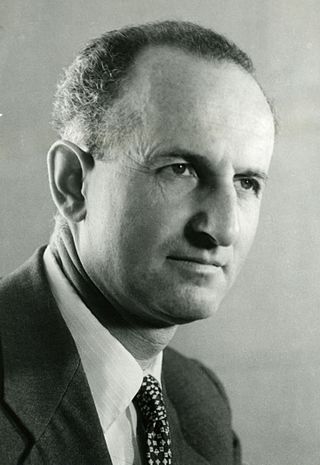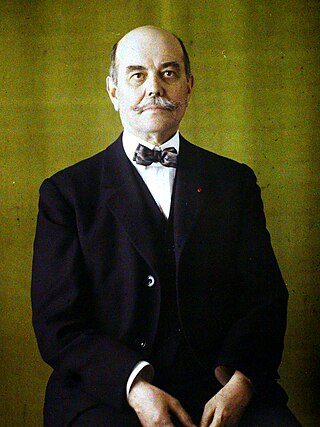Fernando Lahille (Fernand Lahille, born August 18, 1861, in Rouen, died July 30, 1940, [1] French-Argentine scientist, ichthyologist and tunicate specialist. [1] Lahille studied science and medicine at the University of Paris, receiving his doctorate in 1891 [2] while publishing extensively. [1]
When in 1893 the Natural History Museum of La Plata in Argentina sought a scientist to head the newly formed zoology department, they found him in Lahille, already with eight years of experience in the marine laboratories of Banyuls-sur-mer and Roscoff, and sixty published works with the thesis on tunicate taxonomy (Recherches sur les tuniciers [2] ) being the most ground-breaking. During six years at the museum in Argentina (1893~1898), [3] Lahille created a marine research station on the edge of Mar del Plata and initiated scientific studies of the continental shelf off Argentina. He also participated in two research trips [4] to investigate the natural resources along the Patagonian coastline.
Lahille subsequently became head of the Fish and Game Department within the Argentine Ministry of Agriculture, [1] where he became involved in new fields of biological research. In Argentina, he published over 300 scientific texts in a very broad field. In May 1910 he was appointed professor of zoology at the Faculty of Agriculture and Veterinary Medicine of the University of Buenos Aires. [1]
Among the areas Lahille worked in are studies on worms in apples and pears, parasitic diseases in agriculture and the fertility of ticks in different life periods, but also largely on invertebrates, such as echinoderms, molluscs, crustaceans, hexapods, arachnids and tunicates. He was also the author of works of a philosophical, technical, anthropological, linguistic and educational nature.
The Argentine stingray ( Torpedo puelcha ) Lahille, 1926, the spectacled porpoise ( Phocoena dioptrica ) Lahille, 1912 and the sea urchin Clavelina nana Lahille, 1890 are examples of species first described by Lahille. The tunicate Didemnum lahillei Hartmeyer, 1909, the knot species Simulium lahillei Paterson & Shannon, 1927 and the dragonhead fish Helicolenus lahillei Norman, 1937 are named in his honour.

Jean Louis Rodolphe Agassiz FRS (For) FRSE was a Swiss-born American biologist and geologist who is recognized as a scholar of Earth's natural history.

The spectacled porpoise is a small to midsize porpoise indigenous to the Southern Ocean. It is one of the most poorly studied cetaceans, partly due to its remote range in the Southern Ocean. What little is known about this porpoise species has been gathered mainly from stranded individuals, and a few observations of living animals made at sea.

Léon Louis Vaillant was a French zoologist. He is most famous for his work in the areas of herpetology, malacology, and ichthyology.

Florentino Ameghino was an Argentine naturalist, paleontologist, anthropologist and zoologist, whose fossil discoveries on the Argentine Pampas, especially on Patagonia, rank with those made in the western United States during the late 19th century. Along with his two brothers – Carlos and Juan – Florentino Ameghino was one of the most important founding figures in South American paleontology.

The La Plata National University is a national public research university located in the city of La Plata, capital of Buenos Aires Province, Argentina. It has over 90,000 regular students, 10,000 teaching staff, 17 departments and 106 available degrees.

Carl Henry Eigenmann was a German-American ichthyologist of the late nineteenth and early twentieth centuries, who, along with his wife Rosa Smith Eigenmann, and his zoology students is credited with identifying and describing for the first time 195 genera containing nearly 600 species of fishes of North America and South America. Especially notable among his published papers are his studies of the freshwater fishes of South America, the evolution and systematics of South American fishes, and for his analysis of degenerative evolution based on his studies of blind cave fishes found in parts of North America and in Cuba. His most notable works are The American Characidae (1917–1929) and A revision of the South American Nematognathi or cat-fishes (1890), in addition to numerous published papers such as "Cave Vertebrates of North America, a study of degenerative evolution" (1909) and "The fresh-water fishes of Patagonia and an examination of the Archiplata-Archelenis theory" (1909).

Louis Charles Émile Lortet was a French physician, botanist, zoologist and Egyptologist who was a native of Oullins.

Phlebobranchia is an order of sea squirts in the class Ascidiacea, first described by Fernando Lahille in 1886.

The Marine Biological Association of the United Kingdom (MBA) is a learned society with a scientific laboratory that undertakes research in marine biology. The organisation was founded in 1884 and has been based in Plymouth since the Citadel Hill Laboratory was opened on 30 June 1888.

Raúl Adolfo Ringuelet Ph.D. was an Argentine zoologist.

Heinz Steinitz was a senior Israeli marine biologist and herpetologist, Professor and Chairman of the Department of zoology at the Hebrew University in Jerusalem. He laid the foundation for research and teaching in marine biology and oceanography in Israel. In 1968 he founded the Marine Biology Laboratory of the Hebrew University near Eilat, serving as its first director. He also served as a founding member of the Zoological Society of Israel and a co-founder of the Society for the Protection of Nature in Israel.
François Mocquard was a French herpetologist born in Leffond, Haute-Saône.

Louis Roule was a French zoologist born in Marseille.

Aves Argentinas-Asociación Ornitológica del Plata is Argentina's main bird conservation charity. It was founded in 1916.

Herman F.C. ten Kate, the younger was a Dutch anthropologist. Ten Kate's anthropological knowledge gathered over several decades of travel was considered as "embryonically modern" attesting to his scientific stature. He held the view that the science of anthropology of non-Western cultures provided insight into deficiencies in Western culture. A linguist, ten Kate was fluent in eight languages. He published articles and reviews in journals; his prodigious work covered publications under 150 titles. He was a member of several expeditions, including the Hemenway Southwestern Archaeological Expedition.
Albert Jean Baptiste Marie Vayssière was a French scientist, a biologist, specifically a malacologist and entomologist, i.e. someone who studies mollusks, and insects. Within the Mollusca, Vayssière specialized in sea slugs and bubble snails, i.e. marine opisthobranch gastropods. He made significant contributions towards a better understanding of the general biology, phylogenetic relationships, biogeography and ecological distribution of the group.

Juan (Jean) Brèthes, also known as Frère Judulien Marie or Juan Brethes was an Argentine scientist, naturalist, entomologist, ornithologist, zoologist and geologist. He was the first entomologist of the National Museum, today known as the Argentine Museum of Natural Sciences. He was a close collaborator of Florentino Ameghino, and translated several of his works into French. Thanks to his intense activity, he systematized a large number of Latin American insect species. He was a precursor in the fight against agricultural pests at a time when insecticides had not been developed to combat them.
Katharina Maria Mangold-Wirz, née Wirz, was a Swiss marine biologist and malacologist, who worked at Université Pierre et Marie Curie's Laboratoire Arago in Banyuls-sur-Mer, France.
Franz Karl Bruch or Carlos Bruch was a German-born Argentinian entomologist and archaeological collector. He worked at the La Plata Museum.
John Richard Paxton was a United States-born Australian ichthyologist, who spent most of his career at the Australian Museum. He has a particular research interest in lanternfishes and other deep-sea fishes. Paxton is a founding member of the Australian Society for Fish Biology and received the society's K. Radway Allen Award in 1997.